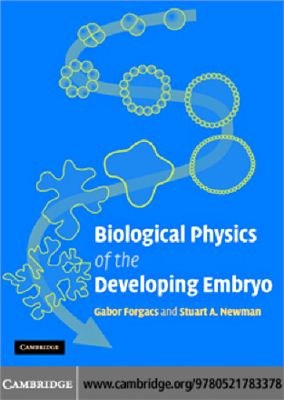Cаmbridge Univеrsity Prеss, 2005, 337 pages
During development cells and tissues undergo changes in patte and form that employ a wider range of physical mechanisms than at any other time in an organism's life. This book demonstrates how physics can be used to analyze these biological phenomena. Written to be accessible to both biologists and physicists, major stages and components of the biological development process are introduced and then analyzed from the viewpoint of physics. The presentation of physical models requires no mathematics beyond basic calculus.
The cell: fundamental unit of developmental systems
Cleavage and blastula formation
Cell states: stability, oscillation, differentiation
Cell adhesion, compartmentalization, and lumen formation
Epithelial morphogenesis: gastrulation and neurulation
Mesenchymal morphogenesis
Patte formation: segmentation, axes, and asymmetry
Organogenesis
Fertilization: generating one living dynamical system from two
Evolution of developmental mechanisms
During development cells and tissues undergo changes in patte and form that employ a wider range of physical mechanisms than at any other time in an organism's life. This book demonstrates how physics can be used to analyze these biological phenomena. Written to be accessible to both biologists and physicists, major stages and components of the biological development process are introduced and then analyzed from the viewpoint of physics. The presentation of physical models requires no mathematics beyond basic calculus.
The cell: fundamental unit of developmental systems
Cleavage and blastula formation
Cell states: stability, oscillation, differentiation
Cell adhesion, compartmentalization, and lumen formation
Epithelial morphogenesis: gastrulation and neurulation
Mesenchymal morphogenesis
Patte formation: segmentation, axes, and asymmetry
Organogenesis
Fertilization: generating one living dynamical system from two
Evolution of developmental mechanisms

